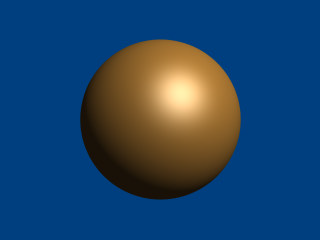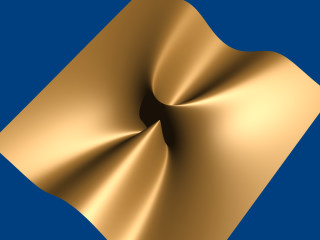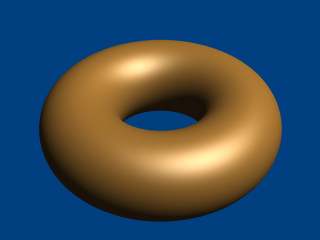Documentation Talk:Tutorial Section 3.2
Updates to perform (sorry, cannot provide it as wiki text):
- in Poly object, Creating the polynomial function : the second formula of the sphere should be changed (it's a picture) to : x²+y²+z²-r² = 0 (the square on r is missing, it will confuse the math-geeks from the first formula) (the picture/formula is reused in the next section: writing the polynomial vector)
- The note in Creating the polynomial function talk about a limit of 7th order, it should be updated to 35 now.
- Hereafter a suggestion for an additional section in poly, about the new syntax
--Le Forgeron 08:23, 22 January 2011 (UTC)
- It's been done. I also added a link in the reference section (where the new syntax is mentioned) to this additional content --jholsenback 13:53, 22 January 2011 (UTC)
Polynomial made easy
Consulting the table in the chapter Poly, Cubic and Quartic or writing a program to get the right poly vector can be a bit cumbersome on the long run (especially when the poly vector is not a write-once-only expression and that you want to get it back).
1) The previous sphere can also be:
#declare Radius=1;
polynomial { 2,
xyz(2,0,0):1,
xyz(0,2,0):1,
xyz(0,0,2):1,
xyz(0,0,0):-Radius*Radius
}
2) Let's now see the second one:
polynomial { 5,
xyz(2,0,1):1,
xyz(0,4,1):1,
xyz(1,2,0):-2
}
3) And finally the torus:
polynomial { 4,
xyz(4,0,0):1,
xyz(2,2,0):2,
xyz(2,0,2):2,
xyz(2,0,0):-2*(r1*r1+r2*r2),
xyz(0,4,0):1,
xyz(0,2,2):2,
xyz(0,2,0):2*(r1*r1-r2*r2),
xyz(0,0,4):1,
xyz(0,0,2):-2*(r1*r1+r2*r2),
xyz(0,0,0):pow((r1*r1-r2*r2),2)
}
I like your prose better than mine. Great. Yet there is still a note in the Poly introduction which state a limit at 15. It's 35 now.
Note: At it's maximum a 35th degree polynomial can be represented with the poly object. If a higher degree polynomial or other non-polynomial function has to be represented, then it is necessary to use the isosurface object.
--Le Forgeron 17:08, 25 January 2011 (UTC)
- sharp eye it's been done: --jholsenback 17:26, 25 January 2011 (UTC)


